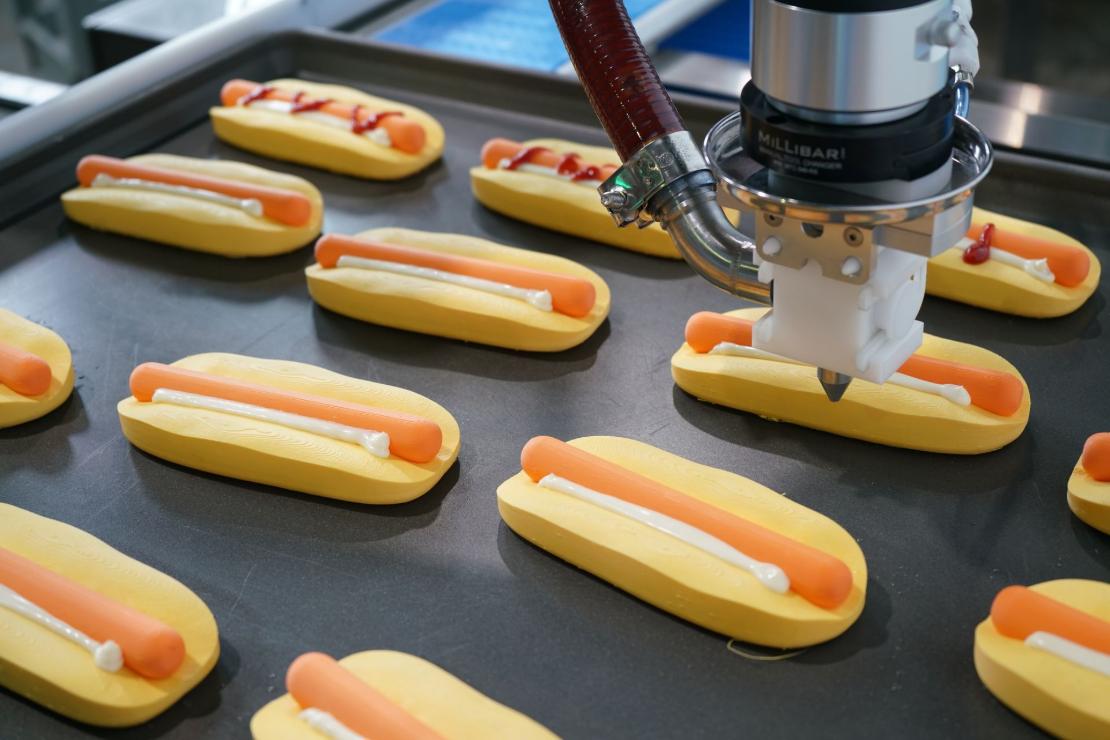Can Robots be Better?
The shift to advanced automation is spreading through manufacturing facilities at a much higher rate than we've ever seen — especially for mid-sized wholesale bakery manufacturers which has made the transition more accessible, cost-effective, and scalable than ever before.
Machine learning (ML) and artificial intelligence (AI) have significantly improved the performance of robotics in handling products and packaging in baking and snack operations.
By combining standard robotics with these new technologies, manufacturers have enhanced their production capabilities and created new opportunities in the industry.

 1. Improved Product Recognition and Handling
1. Improved Product Recognition and Handling
-
AI-powered vision systems allow robots to identify products of various shapes, sizes, colors, and positions—even when they're randomly oriented or partially overlapping on a conveyor.
-
This enables greater flexibility in handling items like cookies, pastries, and muffins that may vary slightly in size or appearance.
-
ML models continuously learn from new data, improving detection accuracy and reducing errors in pick-and-place operations.
2. Adaptive Motion Control and Precision
- ML algorithms allow robots to dynamically adjust their movement patterns based on product type, weight, or placement, optimizing performance for fragile or irregular items.
- Path optimization driven by AI ensures faster and smoother cycle times, minimizing innacurate handling which may cause product damage.
3. Quality Assurance and Inspection
-
Vision systems integrated with AI can detect defects, inconsistencies, or contamination—such as burnt edges, missing toppings, uneven surfaces such as cake layers or packaging misalignment.
-
These systems enable real-time rejection or adjustments, improving overall product quality and reducing waste.
4. Predictive Maintenance and Operational Efficiency
-
AI algorithms monitor machine behavior and sensor data to predict potential failures or wear-and-tear on robotic components.
-
This enables proactive maintenance, reducing unexpected downtime and extending equipment lifespan.
5. Intelligent Packaging and Customization
-
Robots can now adjust to changing packaging formats or sizes without reprogramming—thanks to AI models that identify and learn new packaging types on the fly.
-
For seasonal products or private-label manufacturing, AI allows rapid changeovers and customization of packaging with minimal human intervention.
6. Enhanced Safety and Collaboration
AI improves the safety of collaborative robots (cobots) by helping them predict and respond to human movement in shared workspaces. This allows for closer, safer human-robot collaboration, essential in compact bakery environments.
7. Real-time Data Integration and Feedback
-
ML models process data from sensors, cameras, and ERP systems to adjust production parameters in real time, ensuring consistent throughput and quality.
- Operators receive intelligent alerts and dashboards for better decision-making and faster response to issues.
WHAT ABOUT VERSATILITY TO ADAPT?
Overall robotics and cobots are being designed with several key features to increase versatility and improve their ability to adapt to new products.
The combination of modularity, software, 3D sensor integration, and adaptable tooling is making robotics and cobots more versatile and easier to reconfigure for evolving manufacturing demands.
-
Modular Hardware and End-Effectors: Many robots and cobots now use interchangeable tools and modular end-effectors, allowing quick reconfiguration for different tasks or product changes without extensive downtime.
-
Advanced Software and Programming: The integration of user-friendly programming interfaces, such as teach pendants, offline programming, and graphical interfaces, enables faster reprogramming for new products. Some systems support auto-programming using computer vision or AI.
-
Sensor Integration and Machine Learning: Incorporating sensors, cameras, and AI-driven algorithms allows robots to recognize new objects, adapt to variations, and perform tasks like sorting, assembly, or quality inspection with minimal reconfiguration.
-
Flexibility in Motion and Path Planning: Modern robotics can dynamically adjust their paths and motions based on real-time feedback, making them more adaptable to changes in product shape, size, or orientation.
-
Collaborative Design: Cobots are built to safely work alongside humans, which allows easier adjustments and process changes without extensive safety barriers, speeding up onboarding for new tasks.
-
Universal Grippers and Adaptive End-Effectors: Development of intelligent, adaptive grippers that can handle multiple product types simplifies switching between tasks, reducing the need for specialized tools.
-
AI and Machine Learning Integration: These enable robots to learn from experience and improve their performance over time, reducing the time needed to set up for new products.
What is the right solution for me and Where do I Start?
Apex Motion Control
experienced industry specialists helps guide you through the often difficult task of where and when
to automate your food, bakery, pharma and dairy maunufaturing processes. If you are looking to streamline your processes,
increase efficiency and throughput and reduce some of the non-value manual labor tasks in your plant.